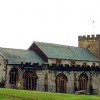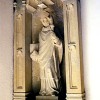For the first eighty years of the 19th century the history of Cranborne Chase was something of a closed book. That this area in the north east of Dorset was especially rich in monumental evidence of England’s earliest agricultural societies was well known, but few excavations had been carried out here.
But all that was to change when, in 1880, a landmark shift in the Chase’s ownership took place. In that year General Augustus Lane Fox inherited the Rivers Estate from his great uncle and adopted the name Pitt-Rivers. The Rivers seat in Dorset was at Rushmore House, a country residence on Cranborne Chase, now the Sandroyd School. But Pitt-Rivers was no mere landowner of the idle rich kind. Rather, his twenty or so years at Rushmore saw the greatest flourishing and fruits of his life-long interest in archaeology and a revolution in our understanding of the prehistory of Cranborne’s extensive royal hunting district. Indeed, Sir Mortimer Wheeler considered Pitt-Rivers to have been the greatest antiquarian and excavator of his day.
Before Pitt-Rivers, whatever digs did take place on the Chase most likely amounted to little more than unscientific haphazard pillages for treasure more than anything else, and certainly led to no lasting or comprehensive understanding of the prehistoric settlers of the area. By the time he had gone to his grave Pitt-Rivers had explored or excavated a multiplicity of sites on or adjoining his Cranborne estate and had set detailed and systematic excavation on a firm professional foundation.
In his years at Cranborne, Pitt-Rivers’ work teams sifted and meticulously recorded the Bronze Age cemetery on Martin Down, a Romano-British village at Woodcutts, and Wor Barrow on Handley Hill – the first ever in-depth excavation of a Neolithic long barrow. He further explored a Roman villa at Iwerne Minster and was the first archaeologist to carry out a detailed investigation of the mysterious Bokerley Dyke along Dorset’s north east border. Pitt-Rivers wondered if this earthwork might be a trap for deer, as Blagdon to the east was once Dorset’s largest deer-park. Seeking explanations for archaeological mysteries caused him to entertain all possibilities.
This fascination for unlocking the secrets of the past, as well as an almost kleptomanial fetish for anthropological artefacts expressed itself long before Pitt-Rivers came to Dorset. Born in 1827, the son of William Augustas of the wealthy Lane-Fox gentry family of Hope Hill, Yorkshire, young Augustus entered the Royal Military Academy at Sandhurst in 1841, being commissioned into the Grenadier Guards on passing out four years later. In 1852 Lane-Fox toured Europe to study methods of gunnery instruction, then became a gunnery instructor himself during service in the Crimean War.
In 1885 he went to Malta to train soldiers in rifle use after a medical had found him unfit for further service in the Crimea.
Following the Trent Affair early in the American Civil War, Lane-Fox was sent to Canada, but returned after only six months to serve as Assistant Quartermaster General in Cork, Ireland from 1862 to 1866. It was during these four years that he embarked upon his first excavations. From 1873 to 1877 he served a term as Commander of the West Surrey Brigade Depot in Guildford.
When Pitt-Rivers took up his residence at Rushmore House in 1880, having had two previous residences in London, he was in the twenty-seventh year of his marriage to Alice Stanley, eldest daughter of Lord Stanley of Alderley, Cheshire, and had nine children. His Cranborne estate amounted to 27,000 acres, and the Pitt-Rivers family had an annual income of a little under £20,000. For the rest of his life the management of the estate would be left to an agent, while the General kept a tight rein on his affairs.
After leaving Ireland he had conducted excavations in London, Yorkshire and Sussex before moving to Cranborne Chase. In 1861 Pitt-Rivers joined the Ethnological Society of London and the Anthropological Society slightly later. In 1864 he was elected to the Society of Antiquarians. By this time the Lieutenant General had compulsively amassed a huge collection of anthropological artefacts – mostly from dealers, but some from his own excavations.
The General would typically arrive at a site with his workman at 7 a.m. Pitt-Rivers recognised the importance of studying modern artefacts in order to understand those of the past. He recorded all finds on a site, no matter how trivial (including rubbish), with their contexts, developing the concept of typology: the classification in a chronological sequence of finds showing evolution over time. Close attention had to be paid to stratification, and the workers had to be fully trained. Pitt-Rivers thought that excavation should only be carried out under proper supervision. In later life he documented his fieldwork, had detailed plans drawn up, even having models made.
In 1883 he was appointed the first ever Inspector of Ancient Monuments, inclusion on the record of which precluded a landowner from destroying or defacing a monument he owned. Between 1887 and 1896 Pitt Rivers published in several volumes his ‘Excavations on Cranborne Chase’, which was warmly received at Salisbury. The work from excavation to publication needed the help of reliable clerical assistants and draughtsman, which the excavator himself handpicked. During a lecture to the Royal Archaeological Institute he pointed out the typically low cranium of early men’s skulls (he himself even invented and built a craniometer to measure them.)
Pitt-Rivers also became pre-occupied with the origin of local place names. He was sure funding would be adequate if the gentry could look beyond hunting and shooting, and criticised newspaper editors for ignoring “sensible things” like archaeology. But the General did not allow his own preferences to overrule the desires of others.
It must not be thought Pitt-Rivers set out to amuse the agricultural classes; he intended to educate them as well. The finds from his excavations on Cranborne Chase and exhibits from abroad were cleverly displayed to instruct and enlighten visitors. And he had ample means to explore the Chase; it was said that one could walk to the coast without leaving the Rivers estate.
But if Pitt-Rivers was a first class excavator; he was no less successful in brightening the lives of the local population. He encouraged as many as 40,000 to visit the estate annually, drawn by a bandstand, open-air theatre and zoo he established in the grounds of Rushmore Park. He opened an area known as the Larmer Grounds to the public on Sundays. The menagerie also became a laboratory for experiments in the cross-breeding of cattle and yaks – early forays into genetic engineering, which won Pitt-Rivers a fellowship of the Zoological Society.
But some of the activities also drew criticism. Ralph Wightman said of Pitt-Rivers that he “succeeded in shocking most of the countryside – I can remember elderly non-conformist relatives describing it (i.e. the opening of the Larmer Grounds) with obvious disapproval”. The Vicar of Sixpenny Handley complained about the noise from the General’s private band in the pleasure grounds. Many did not share Pitt-Rivers enthusiasm for disturbing burial places: the 7th Earl of Shaftesbury, for one, believed the desecration of graves to be sacrilege.
Disapproval was also voiced after the General opened a museum and pub – called the Museum Arms – in nearby Farnham. To this museum he donated some 20,000 of the objects in his collection in 1884, though many more were left in Rushmore and in his London homes. Pitt-Rivers was awarded an honorary degree in 1886. He died in 1900 at the age of 73, his ashes being deposited in a black marble reliquary high in a wall-niche at Tollard Royal Church.
The material from Cranborne Chase has been relocated to the Salisbury and Wilts Museum, where a gallery to the memory of the excavator has been created. The Pitt Rivers Museum in Oxford also exhibits many of his collections together with a reconstruction of the Woodcutts Romano-British village.



